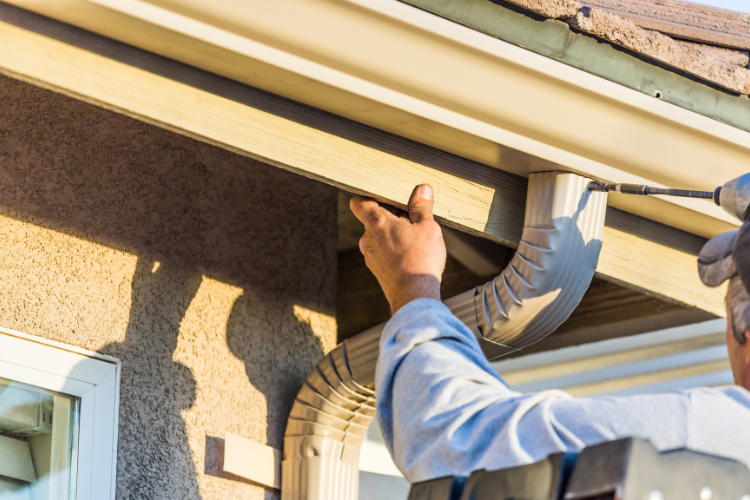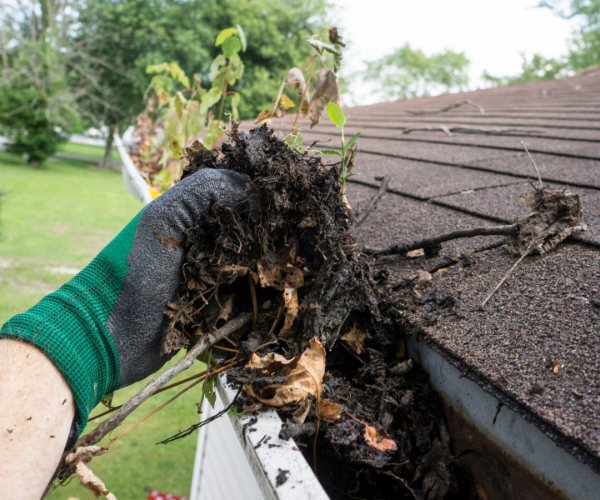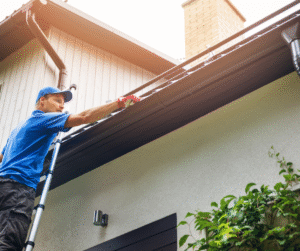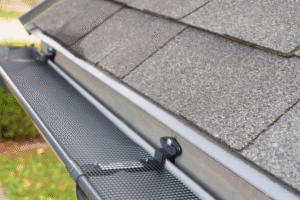A properly done gutter installation is essential for keeping your home in great condition. Without a reliable gutter system, rainwater can damage your siding, fascia, foundation, and even your landscaping. Professional installers take precise measurements and fit each piece perfectly, using durable materials that reduce the risk of leaks and other long-term problems.
By choosing professional installation instead of a DIY approach, you save time, avoid costly mistakes, and ensure your gutters are set up to perform properly. Skilled installers follow proven methods so you can feel confident your system will protect your home from water damage, leaks, and unnecessary wear for years to come.
Importance of Professional Gutter Installation
A quality gutter system is only as effective as the way it’s installed. Professionals have the tools and expertise to create a perfect fit for your home, ensuring rainwater flows away from vulnerable areas. This precision helps prevent issues like wood rot, soil erosion, and foundation cracks while also protecting your home’s appearance. Using durable materials and proper techniques means fewer repairs and a longer-lasting system.
Hiring experts also saves you from the risks and frustrations of a do-it-yourself job. Trained installers understand how to handle challenging rooflines, choose the right gutter style, and ensure secure attachment for maximum performance. The result is a reliable, low-maintenance gutter system that offers dependable protection through every season.
Preventing Water Damage and Structural Issues
Water damage can be a real problem in your home. It may cause rot in the wood and let mold grow. A good gutter system moves rainwater away from the foundation, siding, and fascia. This helps keep those parts of your house in good shape. If you do not have gutters, water can get into the walls. This can lead to repairs that might cost a lot.
Things like rot and mold can weaken the structure of your house, mainly in places that get a lot of rain. When water cannot drain right, moisture gets stuck inside. This damages your home and can also be bad for people’s health.
Erosion around your foundation is another problem if there is no proper gutter system. Water may gather near rafter tails and around the foundation. This weakens the soil, so the home could settle or sink with time. If you install a gutter system the right way, it will help stop water damage, rot, erosion, and mold. In the end, you keep your home healthier and avoid extra costs.
Enhancing Curb Appeal and Property Value
A well-planned gutter system can make your home look better and boost its curb appeal. Choosing stylish gutter items like gutter guards will help keep leaves and dirt away. These also give the whole place a neat look. Many homeowners like getting gutters made of copper because this metal looks good and makes the roofline stand out.
A good gutter setup does more than just make the house look nice. It helps control water very well, which can lift the property value. People looking to buy a house want a smooth gutter system. They see this as a sign that the seller worked hard to take good care of the home.
Using gutters that catch your eye—like K-style, half-round, or box types—will make roofing last longer. They keep away water stains and can help save the garden around the house from being washed out by heavy water. Gutter guards and a system that are kept in good shape make your house stay strong and nice to look at for many years to come. This will help a lot when you want to sell or get the most out of your home.
Assessing Your Home’s Gutter Needs
To choose the right gutter system, you need to look at the size of your roof and what the weather is like where you live. You also have to use the linear foot measurement to figure out the amount of gutter you need. This helps to know how much money you will spend.
Think about the number of things needed to set up your gutter system. This includes things like downspouts, hangers, and if your fascia lines up as it should. When you know all of these things and check what you have in place now, you can pick the best option with less water damage. Now, let us look at the main things about roof size and how water will run off.
Evaluating Roof Size, Pitch, and Layout
Your home’s roofline plays a big part in how you pick and put up gutters. If you have a big roof or the roof is very steep, you will need a gutter system that can move more water. Smaller roofs with less slope will not need as much.
It can be hard when your roof layout has lots of valleys and where rafters meet. This makes it more tricky to measure the linear footage of gutters you need. Sometimes, you will have to use custom gutter hangers or brackets made for those hard spots.
You should also look at the shape of your shingles and rafters. They must be in good shape to hold the weight of the gutters. They need to do this without causing any harm to the main pa
Identifying Existing Drainage Problems
Look around your home for signs of erosion or leaks. These usually show that your drainage is not working well. Water that pools close to walls or downspouts placed in the wrong way shows that the system is not getting the job done.
Also, look for rust on gutters and check for holes in rafter tails. These problems may let water get out and can make stress on the house worse. Over time, moisture can build up and make mold grow.
If gutters are not lined up right, water may not flow well. This can make gaps in the way water is controlled. It is best to have a professional put in gutters the right way. This helps water go where it should, stops erosion, and keeps your home safer from leaks, mold, and rust.
Exploring Gutter Materials and Styles
When you pick gutter materials, you need to think about how long they will last, how they look, and how much they cost. The most common types of gutters are aluminum, vinyl, steel, and copper. Each of these has its own good points.
You also have to choose between seamless and sectional gutter sections. Sectional gutters are easy to fix if they break. Seamless ones have less risk of leaks. By learning about these things, homeowners can find a gutter that goes with the look of their roofing and works well for a long time.





